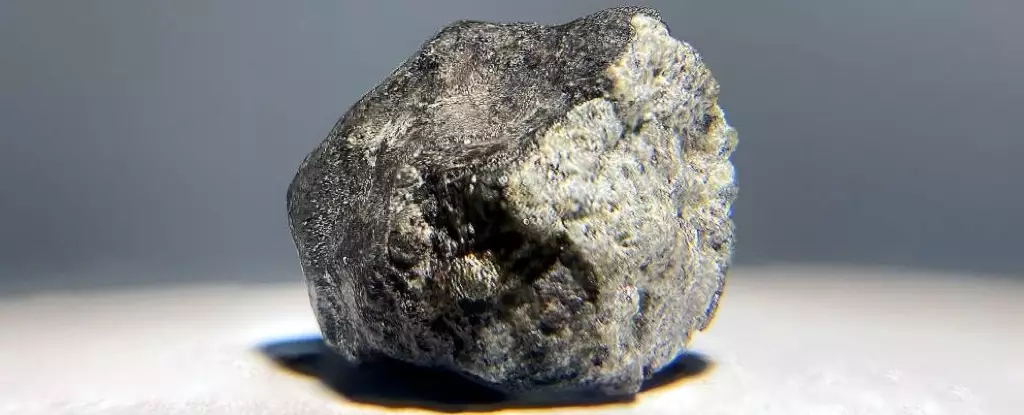The study of meteorites has long intrigued scientists, offering a rare glimpse into the materials and processes that shaped our Solar System. Until recently, only a limited number of meteorites that have fallen to Earth could be confidently traced back to their parent bodies in space. However, recent research has dramatically expanded our understanding, revealing that over 90 percent of meteorites can now be linked to specific origins. This breakthrough marks a significant achievement in our quest to comprehend the complex dynamics of cosmic bodies and their interrelationships.
The majority of these meteorites fall into two categories: H (high iron) and L (low iron) chondrites. Collectively, these account for roughly 70 percent of all meteorites found on Earth. Named for their distinctive composition that includes small, round particles known as chondrules, these meteorites provide crucial insights into the early Solar System. Chondrules are created through the rapid cooling of molten rock, a process that sheds light on the conditions of their formation and subsequent journey through space.
Researchers from prestigious institutions, including the French National Centre for Scientific Research and the European Southern Observatory, have identified that these chondrites originated from three specific asteroid families: Massalia, Karin, and Koronis. Situated in the asteroid belt between Mars and Jupiter, these families are home to a vast array of asteroid fragments. This finding not only highlights the interconnectedness of these celestial bodies but also underscores the impact of historical events that have shaped their current states.
An intriguing element that emerged from the studies is the ability to date significant collisions within these asteroid families. By analyzing the ages of various meteorites, researchers pinpointed noteworthy events, such as the major collisions in the Massalia family that occurred 466 million and 40 million years ago. The Karin and Koronis families experienced their own impacts approximately 5.8 and 7.6 million years ago, respectively. Understanding these events provides a timeline for how fragments of asteroids break away and enter the pathways that lead to Earth.
Such recent collisional history sheds light on the abundance of meteoritic materials currently available for atmospheric entry. Recognizing that many meteorites observed in contemporary times result from relatively recent events helps scientists calculate and predict future asteroid paths. The effectiveness of collision-induced disruption emphasizes the ongoing evolution and dynamism of the asteroid belt as a system.
While H and L chondrites are prevalent, the research teams did not stop there; they pushed the boundaries further by investigating less common meteorite types. This extended exploration revealed connections to other asteroid families including Veritas, Polana, and Eos. By accommodating this additional data, they have nearly accounted for all known meteorites, surpassing the previously mentioned 90 percent threshold.
Such comprehensive studies improve not just our catalog of meteorites but also inform astronomical models concerning the Solar System’s past and future developments. Understanding the mechanisms of asteroid fragmentation allows astronomers to theorize about potential impacts on Earth and other celestial bodies.
The revelations brought forth by these studies signify a critical step in meteorite research, illustrating how interconnected our cosmic neighborhood truly is. The collaborative efforts among international research teams reflect the importance of shared knowledge in the scientific community. As the quest to observe, catalog, and decipher meteorites continues, scientists remain committed to uncovering the remaining mysteries within our Solar System.
As more data is collected, researchers hope to construct a robust understanding of the origins, evolution, and future trajectories of asteroids. This groundbreaking work serves as a reminder of our place in the universe and invites an ever-deeper appreciation for the celestial bodies that circle around us, scrutinizing their stories as we continue to explore the vastness of space.


Leave a Reply